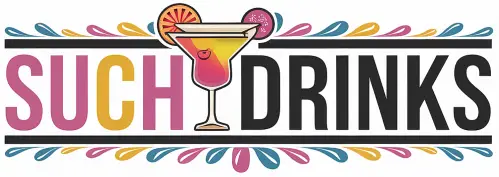My wife often says nothing rivals the pleasure of sipping a crisp Martini on an empty stomach.
It’s about more than just flavor; it’s about the whole experience—the chill of the glass, the rush of alcohol, and that irresistible feeling of indulgence.
Cocktail Culture and Fine Dining
Cocktail culture has captivated audiences since Jerry Thomas wowed bar-goers with his fiery Blue Blazers in the 1860s.
While wine garners attention with its rituals—uncorking, swirling, and savoring—cocktails have always brought an element of flair and excitement.
Traditionally, cocktails have been relegated to bars and lounges, only to be served at the beginning of the evening before the shift to wine service in fine dining establishments.
Despite the advancements in mixology, pairing cocktails with gourmet food has often seemed far-fetched.
During a recent visit to Clemente Bar, above the renowned Eleven Madison Park in New York City, I witnessed this changing landscape firsthand.
This vibrant venue, created by chef Daniel Humm and artist Francesco Clemente, offers two unique spaces: a casual lounge for small bites and cocktails and a coveted nine-seat chef’s counter that presents a stunning five-course tasting menu, featuring a bespoke cocktail with each course.
Strikingly, there is no wine here—only inventive cocktails, with nonalcoholic alternatives available upon request, for a flat fee of $225 plus tax.
As I entered this lively three-Michelin-star atmosphere, I couldn’t shake the line of skepticism creeping in.
The ‘small plates’ concept worried me—would I leave full, or perhaps just slightly tipsy? To ease my concerns, I planned a later meet-up with my wife for some dosas.
Old doubts about cocktail pairing lingered in my mind.
Rising Trends in Dining Experiences
Consider the strength of cocktails—one drink holds more alcohol than a standard glass of wine.
Multiply that across five courses, and the thought of not recalling the meal seemed plausible.
Moreover, the potential for cocktails and food to clash raised eyebrows, as wine typically enhances a dish’s flavors while the mix of various cocktail ingredients can be hit-or-miss.
Yet restaurants are navigating challenging times.
Rising food and labor costs coincide with decreasing wine sales, prompting a shift toward unique experiences.
Many fine dining venues are adopting tiny, minimalist chef’s counters, redirecting the focus from dining companions to the chefs’ artistry.
By integrating cocktails into this setting, they introduce new flavor profiles while highlighting the creativity of modern culinary presentations.
Additionally, it paves the way for imaginative nonalcoholic options.
Take Supperland in Charlotte, North Carolina, for example.
Their cocktail dinners at the Speakeasy showcase inventive techniques, featuring drinks created with vegan foams and liquid nitrogen.
Inspired by the Griswold family’s Christmas tree in National Lampoon’s Christmas Vacation, these cocktails deliver a theatrical experience.
At Clemente Bar, I was captivated by a striking milk punch, expertly made with a tall copper coffee siphon, reminiscent of a mad scientist’s laboratory.
Thankfully, despite the potent cocktails, I left Clemente feeling satisfied rather than starved, though I did enjoy a pleasant stroll through Madison Square Park afterward.
Some establishments, like the Michelin-starred Atomix in New York, have adapted their approach in response to shifting circumstances.
The pandemic prompted them to transform their casual bar environment into an intimate omakase setup, accommodating five guests for a cocktail pairing journey.
Featuring Korean cuisine, their imaginative cocktail menu invites diners on a unique culinary exploration, priced at $285 per person.
The Future of Cocktail Pairings
Derek Brown, a notable sommelier and former owner of Washington, D.C.’s esteemed Columbia Room, challenges the notion that wine is the sole catalyst for enhancing fine dining.
He emphasizes exploring broader pairing options, arguing that innovative cocktails can contrast deliciously with various dishes, elevating the dining experience beyond conventional boundaries.
Many now believe that cocktail tasting menus have the potential to revolutionize the dining landscape.
The surge in cocktail pairings reflects the creative freedom they afford both chefs and mixologists and taps into an appetite for fresh experiences.
There’s also an increasing interest in trendy nonalcoholic beverages; surveys indicate that many in the U.S., especially younger consumers, are choosing to drink less.
Interestingly, at Atomix, around 30 percent of bar patrons select nonalcoholic pairings, while Clemente reports a figure closer to 10 percent.
Notably, these nonalcoholic offerings aren’t discounted, as they can sometimes involve more elaborate preparation than traditional cocktails.
While the hospitality sector faces numerous hurdles, there’s a silver lining for those choosing to abstain from alcohol.
Many revel in the prospect of new, thrilling experiences, even when the cost approaches $200 per seat.
Although I find it hard to imagine anything rivaling the joy of a cold Martini on an empty stomach, the innovators leading the cocktail tasting trend might just surprise us all, turning each meal into an extraordinary adventure.
Source: Punchdrink

